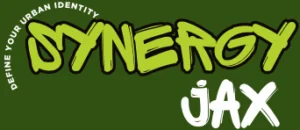In today’s fast-paced digital landscape, creating apps and websites doesn’t require a degree in computer science. Effortless no-code tools have emerged as game changers, empowering individuals and businesses to bring their ideas to life without writing a single line of code. These intuitive platforms allow users to design, build, and launch projects with ease, making technology accessible to everyone.
As more people recognize the potential of no-code solutions, the demand for user-friendly tools continues to grow. From startups to established companies, these platforms help streamline workflows and enhance productivity. With a plethora of options available, it’s easier than ever to harness the power of technology and innovate without the steep learning curve traditionally associated with coding.
Table of Contents
ToggleOverview of Effortless No-Code Tools
Effortless no-code tools simplify the development process, enabling users to build applications and manage workflows without writing code. These platforms offer intuitive interfaces, allowing individuals to organize, customize, and deploy solutions quickly. Popular examples include:
- Webflow: Specializes in website design and development with drag-and-drop functionality.
- Airtable: Combines spreadsheet capabilities with database features, facilitating easy data manipulation.
- Bubble: Empowers users to create advanced web applications through visual programming.
These tools cater to diverse needs across industries. Users in marketing, project management, and e-commerce benefit from enhanced efficiency and reduced development times.
Key advantages of no-code tools include:
- Cost-Effectiveness: Companies save on hiring developers by using no-code solutions.
- Speed: Rapid prototyping enables faster iteration and deployment.
- Accessibility: Non-technical users gain the ability to create functional applications, democratizing technology.
No-code platforms are frequently integrated with other software. Popular integrations streamline processes and enhance functionality. Users can connect no-code tools with CRM systems like Salesforce, automation tools like Zapier, and communication platforms like Slack.
Emerging trends indicate greater adoption of no-code tools. As industries evolve, the demand for quick solutions continues to rise, reinforcing the importance of these platforms in the digital ecosystem.
Benefits of Using No-Code Tools

No-code tools provide numerous advantages, significantly altering how users approach development processes. Their key benefits include enhanced accessibility and increased speed and efficiency.
Accessibility for Non-Technical Users
No-code tools empower non-technical users to create applications and automate workflows. These platforms feature intuitive drag-and-drop interfaces that eliminate the need for complex coding knowledge. People with diverse backgrounds can leverage these tools for various projects. Examples include entrepreneurs launching startups or marketers designing landing pages. As a result, businesses can innovate rapidly without relying solely on IT departments.
Speed and Efficiency in Development
No-code tools dramatically reduce development times. Users can design, prototype, and launch applications within hours instead of weeks or months. Streamlined processes enable rapid iteration and testing, facilitating quick feedback loops. Tools like Airtable allow for real-time collaboration, ensuring teams stay aligned and productive. Overall, no-code platforms enable organizations to respond swiftly to market demands and launch innovative solutions faster.
Popular Effortless No-Code Tools
Effortless no-code tools offer various functionalities that enhance productivity and streamline project development. Here are three popular options:
Tool 1: Webflow – Description and Features
Webflow enables users to design websites visually without writing code. It features a drag-and-drop interface that allows customization of layouts, typography, and animations. Users can integrate e-commerce functionalities effortlessly, manage content with a built-in CMS, and launch responsive sites quickly. Webflow also supports SEO optimization tools, ensuring that users create search-friendly websites.
Tool 2: Airtable – Description and Features
Airtable combines the simplicity of a spreadsheet with the power of a database, perfect for data organization and project management. Users can create custom views, collaborate in real-time, and automate workflows using various templates. Airtable’s rich field types, such as attachments and checkboxes, enhance data management flexibility. Additionally, its integration with other applications like Slack and Google Workspace boosts workflow efficiency.
Tool 3: Bubble – Description and Features
Bubble is an advanced platform for building web applications without coding. It offers a visual programming interface that allows users to create complex functionalities through workflows and elements. Users can design custom user interfaces, implement logic, and connect to APIs with ease. Bubble’s built-in database management system further streamlines app development, enabling users to build and deploy applications rapidly, even those requiring user authentication and payment processing.
Use Cases for No-Code Tools
No-code tools find extensive applications across various domains, greatly simplifying processes and enhancing efficiency. Here’s a closer look at specific use cases.
Business Automation
Business automation through no-code tools transforms workflows by streamlining repetitive tasks. Users can deploy tools like Zapier to automate data transfer between applications, eliminating manual entry. Automating email responses, generating reports, and managing customer interactions enhances productivity. For example, integrating Airtable with marketing platforms allows teams to automate lead tracking, reducing the time spent on these tasks by 50%. These automations minimize errors, improve accuracy, and enable teams to focus on strategic initiatives rather than administrative duties.
Website Development
Website development benefits significantly from no-code tools, allowing users to create websites without technical skills. Using platforms like Webflow, individuals can design responsive sites using a straightforward drag-and-drop interface. Users can customize layouts, integrate multimedia elements, and optimize for SEO without writing code. This ease of use enables rapid prototyping, allowing teams to launch websites in days rather than weeks. Furthermore, no-code tools provide templates for various industries, enhancing the speed and versatility of the site-building process.
App Creation
No-code tools facilitate app creation by providing visual programming interfaces for users of all skill levels. Platforms like Bubble empower users to design complex applications with built-in functionality for managing databases and user interactions. By employing these tools, users can iteratively test and refine their applications, significantly reducing development time to mere hours. Businesses can respond swiftly to user feedback, making modifications quickly. This agility in app development supports innovation and allows new ideas to reach the market faster, meeting customer needs effectively.
Effortless no-code tools are reshaping the way individuals and businesses approach technology. By breaking down barriers to entry they empower users to innovate and streamline processes without needing extensive technical knowledge. As these platforms continue to evolve they’ll likely become even more integral to various industries.
The ability to rapidly develop and deploy applications enhances productivity and fosters creativity. With tools like Webflow Airtable and Bubble leading the charge the future of no-code development looks promising. Embracing these solutions can lead to significant improvements in efficiency and innovation making it easier for anyone to bring their ideas to life.










